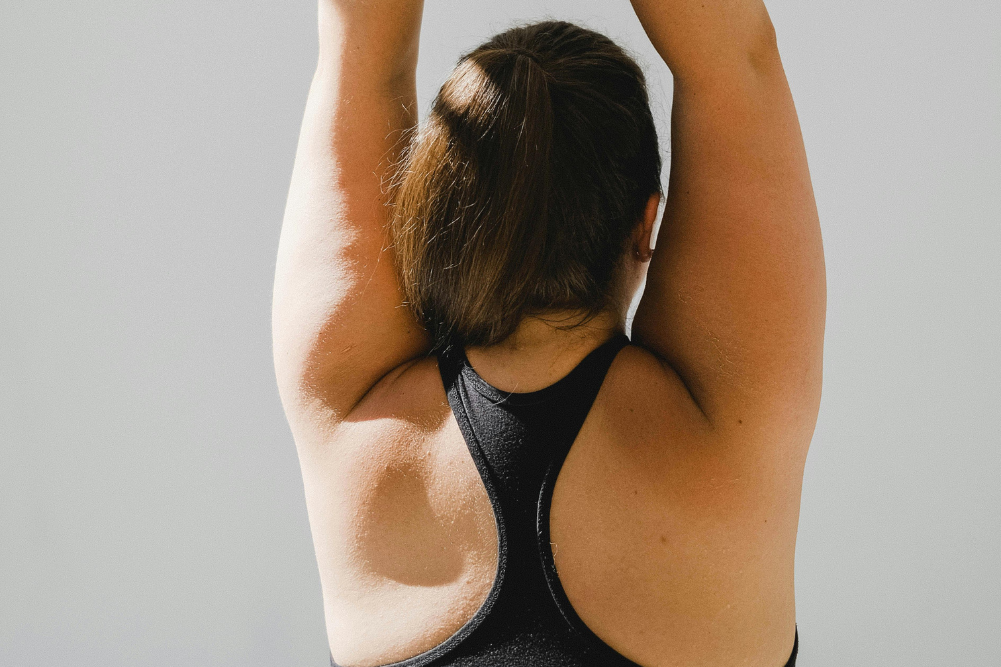Somatic Exercises for Mind and Body
Somatic practices offer a future-focused approach to holistic wellness, providing gentle yet powerful benefits for overall health. Somatic exercises focus on the mind-body connection, offering a transformative approach to physical and mental wellbeing. Unlike traditional fitness routines that often emphasise external performance and strength, somatic practices focus on internal awareness and the subtleties of movement. By helping you to foster greater self-awareness, somatic exercises can alleviate pain, improve posture and enhance overall mobility. Moreover, they encourage a deeper understanding of how stress and emotions manifest physically, promoting holistic healing that extends beyond the physical body to encompass mental and emotional wellbeing.
With this etymology, a somatic movement is practised consciously with the intention of focusing on the internal experience of the movement rather than the external appearance or the result of the movement. Technically, any movement can be somatic if you focus your attention on what you’re feeling in your body as you move. It is about removing the numbness that many of us have become glued in. There are lots of different ways to practise somatic movement, for example, shaking exercises and shouting as you bend and move or dancing in freedom with the intention to release stress and trauma. Depending on how they are approached and practised, yoga and breathwork are also examples of somatic workouts.
Somatic exercises offer several health benefits, mainly by enhancing body awareness and promoting a deep connection between the mind and body. Here are some of the benefits:
Pain relief and tension reduction: Somatic exercises help release chronic muscle tension by focusing on controlled, slow movements. By increasing awareness of physical sensations, individuals can identify and release tension in areas that often go unnoticed. This can relieve chronic pain, particularly in the neck, back, shoulders and hips. By fostering a mind-body connection, somatic exercises can help release emotional tension stored in the body.
Improved posture and alignment: With regular practise, somatic exercises promote better body alignment and posture. By retraining the neuromuscular system to move more efficiently, individuals become more aware of their posture and can correct imbalances that may lead to discomfort or injury.
Increased mobility and flexibility: These exercises encourage gentle stretching and movement, which can enhance joint flexibility and range of motion. Unlike traditional stretching, somatic exercises focus on awareness and control, leading to long-term improvements in mobility and a reduced risk of injury.
Enhanced nervous system functioning: Somatic practices stimulate the parasympathetic nervous system, helping to regulate the body’s response to stress. This leads to a calmer state, reducing anxiety and promoting relaxation.
Better body awareness and mindfulness: Somatic exercises encourage individuals to become more mindful of their bodies and movements, cultivating a heightened sense of awareness. This mindfulness can improve mental clarity, focus and even emotional resilience, as people become more in tune with their body’s responses to stress and emotions.
Support for holistic healing: Somatic exercises address both the mental and physical aspects of health, making them effective for individuals seeking an holistic approach to healing. They can be especially beneficial for people recovering from trauma, as they offer a safe way to reconnect with and process bodily sensations.
Rehabilitation and recovery support: Because somatic exercises involve gentle movements and can be modified for individual needs, they are particularly beneficial for people recovering from injury or illness. By focusing on gradual, mindful movement, these exercises support safe and effective rehabilitation.
Improved sleep quality: Many people report better sleep after incorporating somatic exercises into their routine. The relaxation and body awareness gained from these practices can help ease insomnia and improve overall quality of sleep.
Enhanced athletic performance: For athletes, somatic exercises can improve proprioception, body control and coordination, which are all crucial for performance. Increased awareness of muscle activation patterns and joint movements can help optimise performance and reduce the risk of injury.
5 simple somatic stretches for beginners
Try doing the below stretches for five minutes and repeating them daily.
1. Standing awareness
Stand straight with your feet rooted. Notice how they grip the floor. Try to contract and release your foot muscles. Take deep breaths, noticing how your abdominal muscles expand and contract and how this feels. Finally, scan your body from top to bottom, noticing how your different muscles feel. Locate any areas of tension.
2. Shake it off
If you spend large portions of the day typing on a computer or other device, this exercise may help release tension that often builds in your waist, shoulders, chest, hands and wrists. Stand up on your feet. Begin by shaking your hands and then your elbows until you can loosen all the way to your shoulders. Shake one leg at a time. Stand with your arms above your head and drop your arms to the ground and breathe out heavily. Make a sound. Repeat this until you feel the release.
3. Head hang
This exercise addresses the tension many of us hold in our necks. Stand straight with your feet rooted on the floor. Slowly hang your head, letting it fall as far down as it will comfortably go. Notice how the muscles in your neck feel and how that movement has affected nearby muscles, joints and tissues, like those in your shoulders and upper back. Identify an area that feels tense, such as the back of your neck, and really experience how that tension feels.
Notice how it feels to settle into the stretch and try to release some of the tension.
3. Back bliss
If you experience back pain, this exercise allows you to release and then regain control of the muscles in your lower back and abdominals. It’s a slow movement done while lying on the floor. Position feet flat on the floor, hip-distance apart, knees bent. Take a deep breath, noticing how the muscles in your lower back and abdominals move as you do. Gently arch your back, bringing your belly upward and pressing your glute muscles and feet into the floor. Stay here for as long as feels comfortable, then slowly lower your back and flatten it against the floor.
Repeat the movement very slowly, scanning the muscles in your torso for any tension, trying to release that tension.
4. Iliopsoas exercise
The iliopsoas, where many of us hold a lot of tension, is the muscle group that attaches your spine to your legs. This exercise brings awareness to these and surrounding muscles so you’re better able to release that tension. Lie on your back with your knees bent, feet flat on the floor. Place your right hand behind your head. Gently lift your head as you simultaneously lift your right leg, keeping it bent. (This should look a bit like you’re doing a crunch with just one side of your body.) Scan the muscles in your lower back, hips and legs for tension, noticing how they feel. Gently lower your leg and head. Do the same thing, this time straightening your leg slightly as you lift.
Repeat these motions slowly and gently several times, then do the same on the other side.








